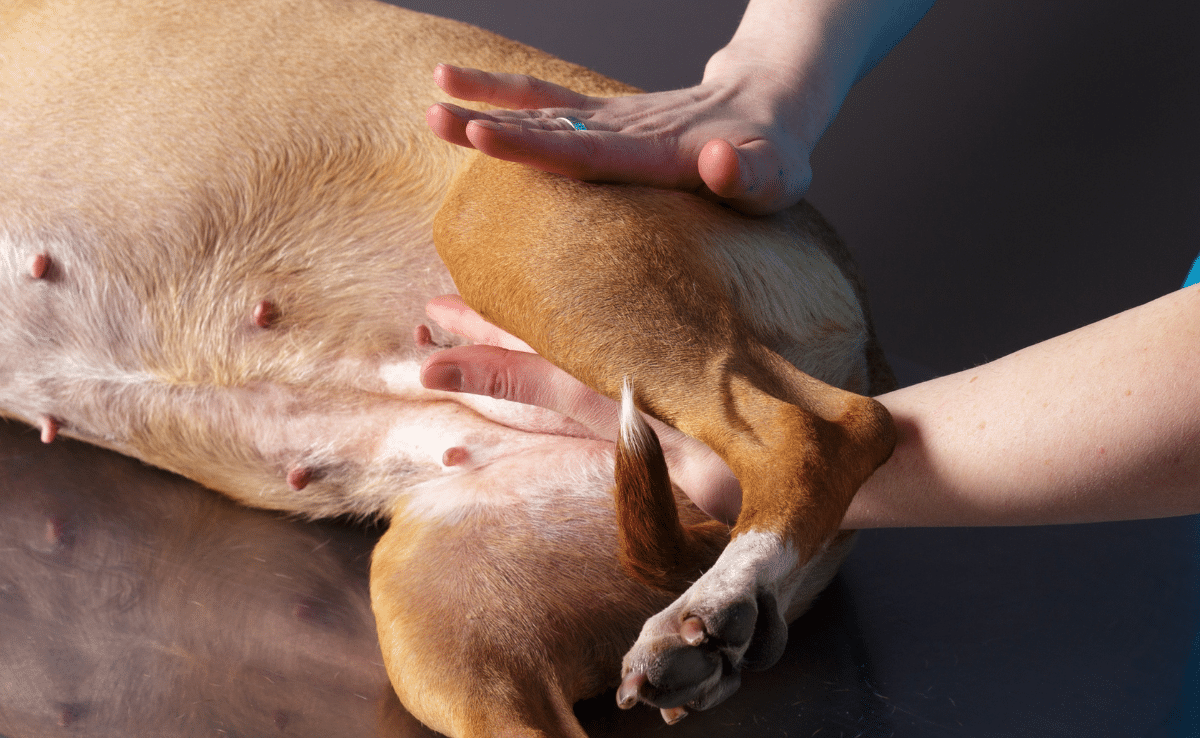
If you are a dog owner, you understand the importance of your furry friend’s health and well-being. Patella dislocation is a common orthopedic condition in dogs, which can cause pain, discomfort, and a decrease in mobility. A dislocated patella can be caused by an injury, degenerative joint disease, or genetics. In some cases, the dislocation can be corrected with surgery, but many cases can be managed with non-invasive treatments, including massage. In this article, we will explore the benefits of massage for dogs with patella dislocation and how to incorporate it into their daily routine.
What is Patella Dislocation?
Patella dislocation occurs when the kneecap (patella) moves out of its normal position in the groove of the thigh bone (femur). This can cause pain, swelling, and limping in affected dogs. Patella dislocation is more common in small and toy breeds of dogs, such as Chihuahuas, Pomeranians, and Yorkshire Terriers. The condition can be caused by a variety of factors, including trauma, joint instability, or congenital abnormalities.
Benefits of Massage for Dogs with Patella Dislocation
Massage is a non-invasive and effective treatment for dogs with patella dislocation. Regular massage can help to reduce pain and inflammation, increase joint mobility, and promote relaxation. Massage can also help to strengthen the muscles around the affected joint, which can provide additional support and stability.
Massage can be a great way to improve your dog’s overall well-being, and it can be especially beneficial for dogs with patella dislocation. Here are some of the benefits of massage for dogs with patella dislocation:
- Pain Relief: Massage can help to reduce pain and discomfort in dogs with patella dislocation. The gentle pressure applied during massage can help to release tension and trigger points, which can alleviate pain and discomfort.
- Improved Mobility: Massage can help to improve joint mobility in affected dogs. The increased circulation and range of motion can help to reduce stiffness and improve flexibility.
- Relaxation: Massage can help to promote relaxation and reduce stress in dogs. The calming effect of massage can help to reduce anxiety and promote a sense of well-being.
- Improved Muscle Tone: Massage can help to improve muscle tone in the affected limb. This can help to provide additional support and stability to the joint.
- Strengthening: Massage can help to strengthen the muscles around the affected joint. This can help to improve the overall health and well-being of your dog.
How to Incorporate Massage into Your Dog’s Daily Routine
Incorporating massage into your dog’s daily routine can be an effective way to manage patella dislocation. Massage should be performed on a regular basis to provide the most benefit. Here are some tips for incorporating massage into your dog’s daily routine:
- Start Slowly: If your dog is not used to massage, start slowly and gently. Begin by using light pressure and gradually increase as your dog becomes more comfortable.
- Use Gentle Strokes: Use gentle, circular strokes to massage the affected area. Avoid using too much pressure, as this can cause discomfort.
- Be Patient: Massage may take some time to show results, so be patient and consistent with your routine.
- Use Positive Reinforcement: Use positive reinforcement, such as treats and praise, to help your dog associate massage with a positive experience.
- Consult with Your Vet: Before you start incorporating massage into your dog’s daily routine, it is important to consult with your veterinarian. Your vet can help you develop a massage routine that is tailored to your dog’s specific needs and can provide guidance on any potential risks or complications.
When performing massage, it is important to pay attention to your dog’s body language and reactions. If your dog appears uncomfortable or in pain, stop the massage immediately and consult with your veterinarian.
FAQs
Is massage a suitable treatment for all dogs with patella dislocation?
Massage can be a suitable treatment for many dogs with patella dislocation, but it is important to consult with your veterinarian before starting a massage routine. Your vet can help you determine if massage is appropriate for your dog and can provide guidance on how to perform massage safely and effectively.
How often should I massage my dog with patella dislocation?
The frequency of massage will depend on your dog’s specific condition and needs. Your veterinarian can help you develop a massage routine that is tailored to your dog’s individual needs.
Can massage replace other treatments for patella dislocation?
Massage can be a helpful supplement to other treatments for patella dislocation, such as medication, physical therapy, and surgery. However, it is important to follow your veterinarian’s recommendations and to use massage as part of a comprehensive treatment plan.
Can I learn to massage my dog with patella dislocation on my own?
While massage can be a simple and effective treatment, it is important to learn proper techniques to avoid causing further injury or discomfort. Your veterinarian can recommend a qualified animal massage therapist who can teach you safe and effective techniques for massaging your dog.
Are there any risks associated with massage for dogs with patella dislocation?
While massage is generally considered safe for dogs, there are some potential risks, including bruising, muscle soreness, and aggravation of existing injuries. It is important to consult with your veterinarian and to learn proper techniques to minimize these risks.
Conclusion
Massage can be a helpful and non-invasive treatment for dogs with patella dislocation. Regular massage can help to reduce pain and inflammation, improve joint mobility, and promote relaxation. By incorporating massage into your dog’s daily routine, you can help to improve their overall well-being and manage their condition more effectively. Remember to consult with your veterinarian before starting a massage routine, and to pay attention to your dog’s body language and reactions during massage.